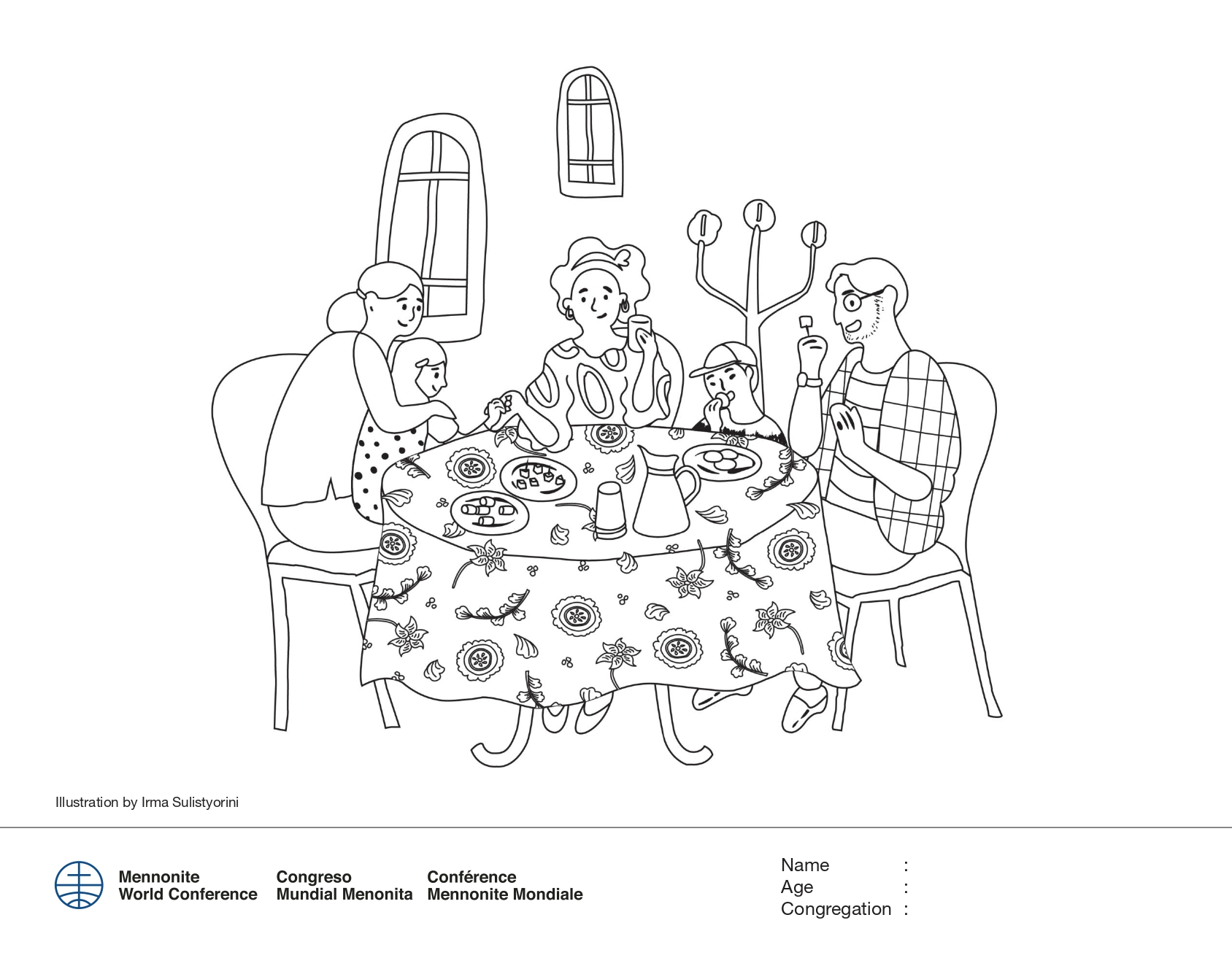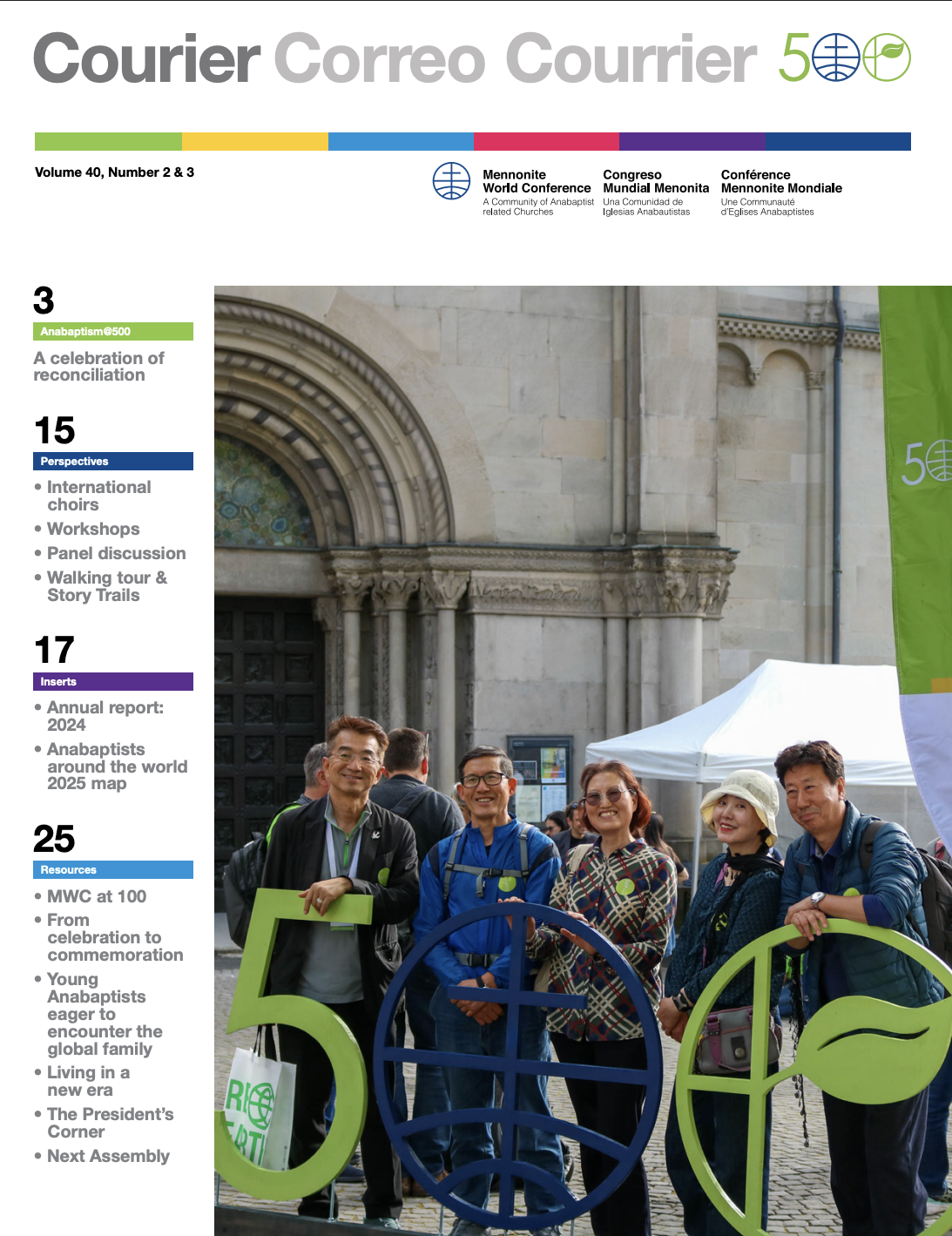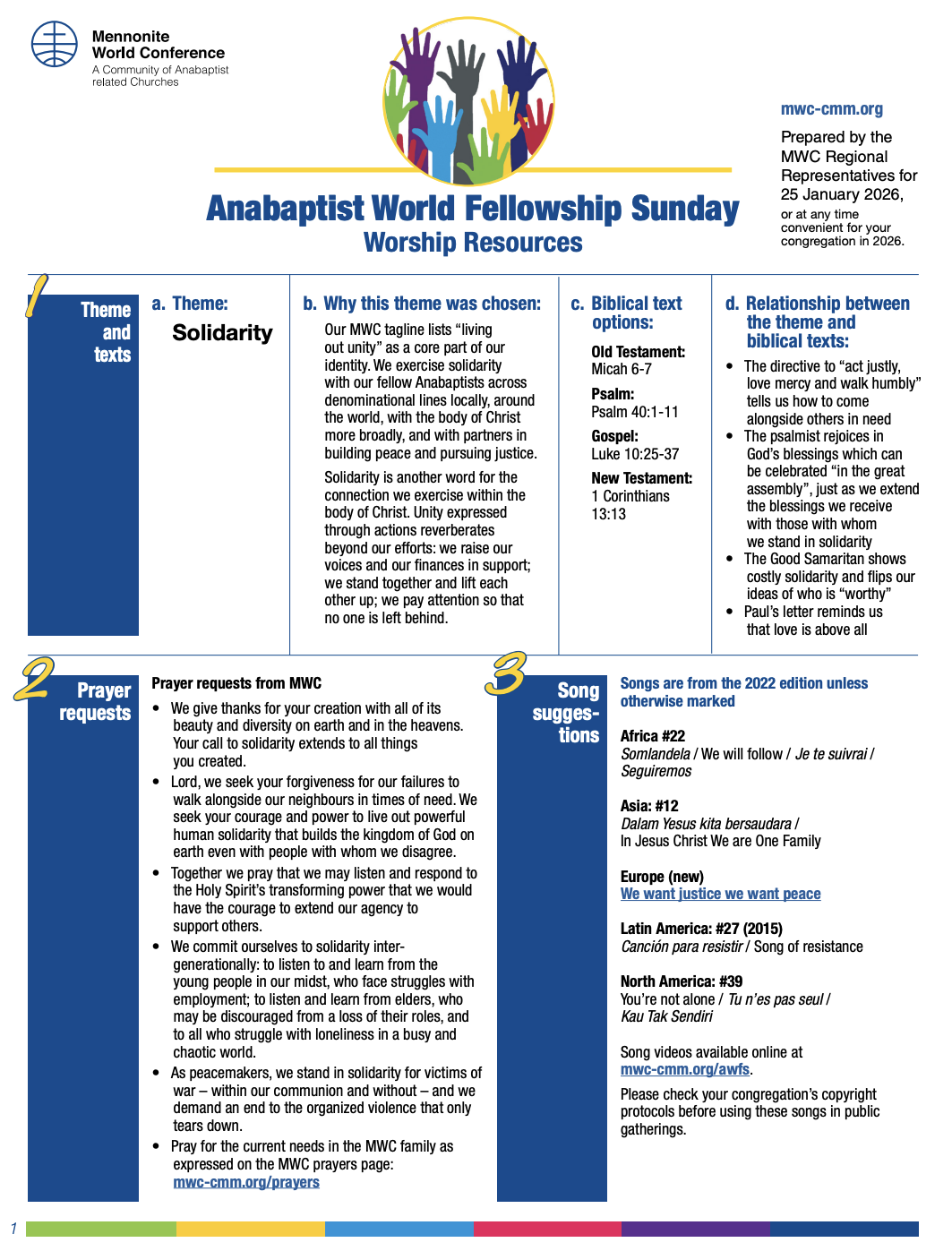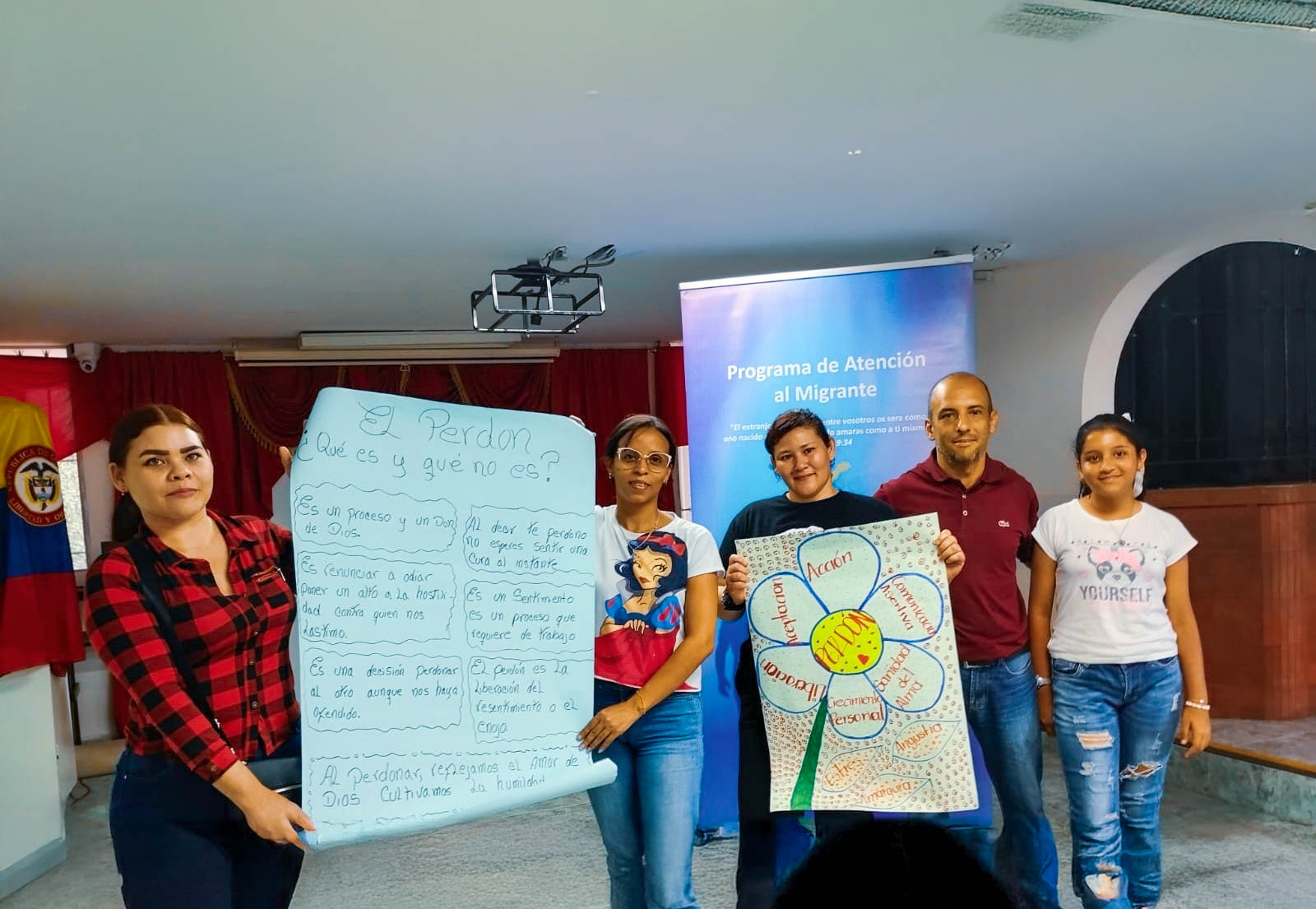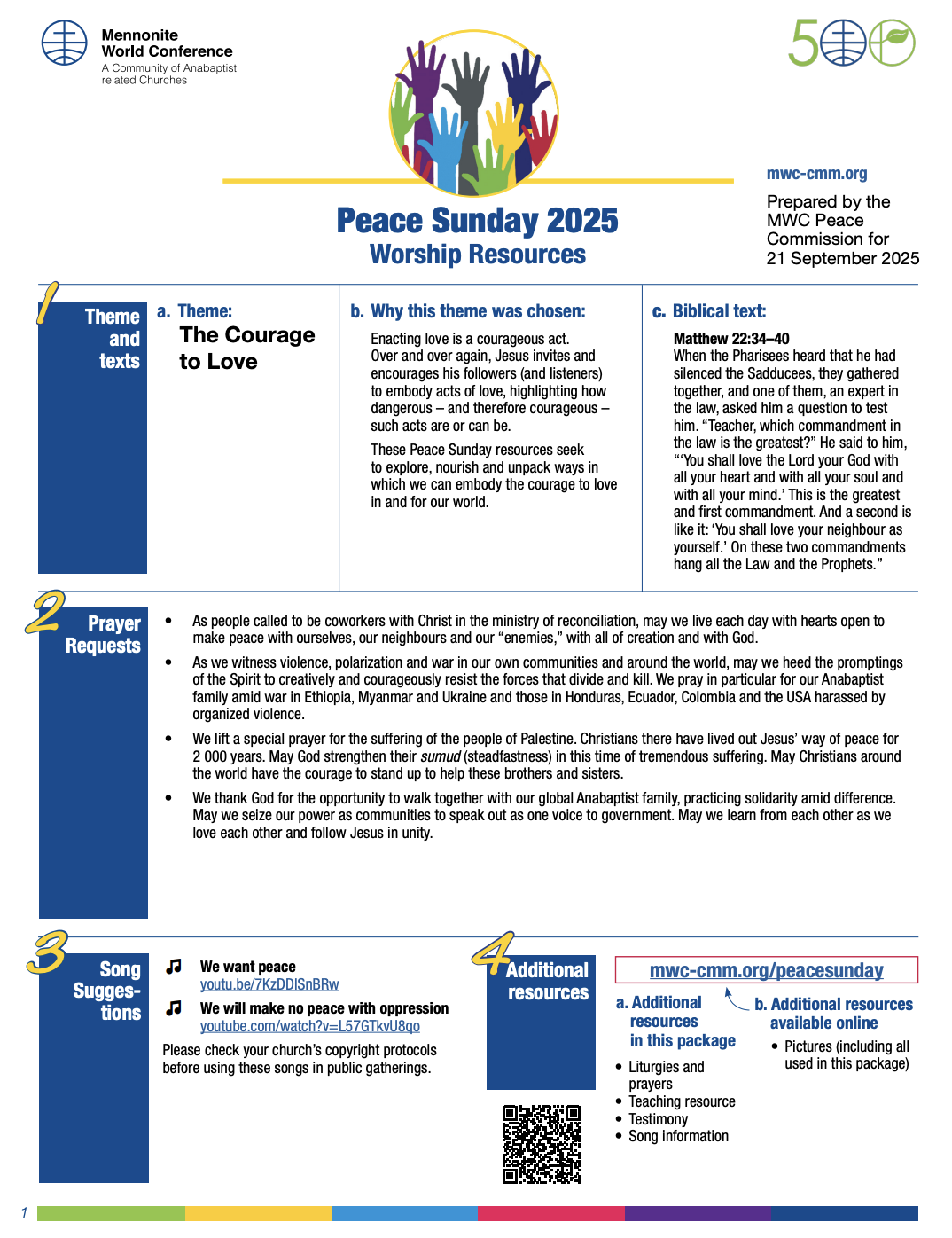-
Courier 2025 / 40.2-3
This issue of Courier is a taste of the 500th anniversary Inspired by Zwingli’s famous invocation to “do something courageous!”, MWC gave the theme “The Courage to Love” to our 500th anniversary year. We marked it with a registration-free event in the streets of Zurich, Switzerland, on Ascension Day, 29 May 2025. It’s also the…
-
Anabaptist World Fellowship Sunday 2026
Theme Solidarity Why this theme was chosen Our MWC tagline lists “living out unity” as a core part of our identity. We exercise solidarity with our fellow Anabaptists across denominational lines locally, around the world, with the body of Christ more broadly, and with partners in building peace and pursuing justice. Solidarity is another word…
-
A weekend of prayer and action against hunger 2025
Liturgy Guide and Resources for the Weekend of Prayer and Action Against Hunger 17-19 October 2025. For this Weekend of Prayer and Action Against Hunger, Christians from all around the world will gather for prayer and worship around the theme of global hunger and food justice. We offer this guide to support worship planners to…
-
Following Jesus into baptism
Clothed together in Christ Presented by Thomas R Yoder Neufeld On this 500th anniversary of the Anabaptist movement, and the 100th birthday of the MWC, we are taking the opportunity to reflect deeply on where we come from, where we find ourselves today, and where we are going.
-
Peace Sunday 2025 – Activities
Who is our neighbour? What is the gospel? Enact “Samarital Acts” (Luke 10:25-37) in the community OR Explore the meaning of “gospel” in the story and notice the different practical ways in which it is embodied in Luke 4. 1. Create multi-generational groups to explore the assignment together over four weeks. 2. Within the groups,…
-
Peace Sunday 2025 – worship resource
Theme The Courage to Love Why this theme was chosen Enacting love is a courageous act.Over and over again, Jesus invites and encourages his followers (and listeners) to embody acts of love, highlighting how dangerous – and therefore courageous – such acts are or can be.These Peace Sunday resources seek to explore, nourish and unpack…
-
We want peace song information
Music & Lyrics: Dennis Thielmann © 2021 / French translation: Marie-Noëlle YoderArr: Dennis Thielmann & Karin Franz © 2025www.songsofpeace.ch Permission granted to MWC member churches for congregational use for Peace Sunday and Anabaptist World Fellowship Sunday. For permissions for ongoing use or in larger group gatherings, see www.songsofpeace.ch/songs/wewantpeace or contact info@songsofpeace.ch
-
MWC annual report 2024
To receive a copy of the audited financial statements, please email a request to info@mwc-cmm.org.
